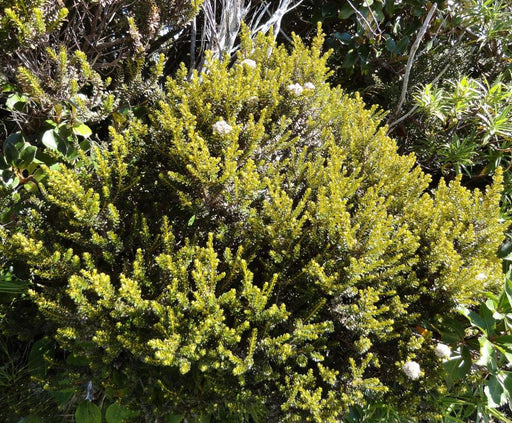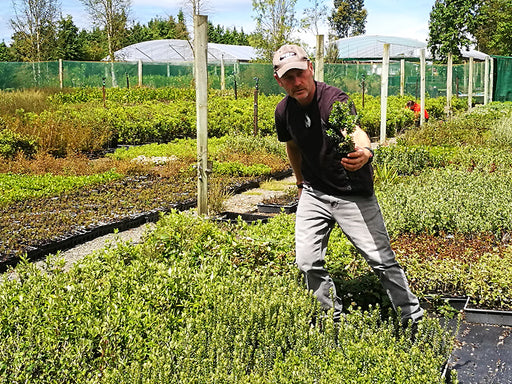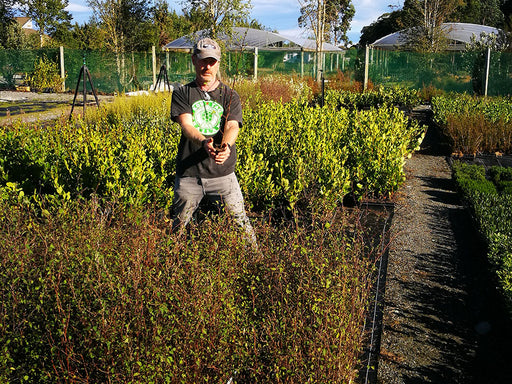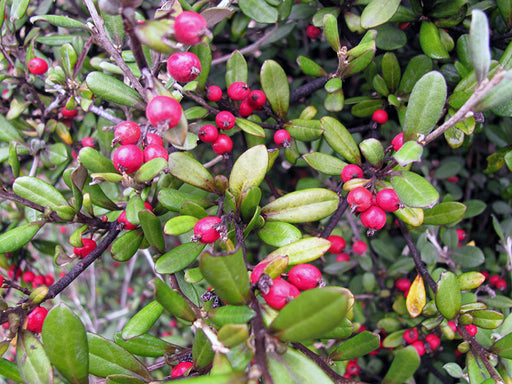Why Windy Sites Matter — and Why Choose Natives

Windy sites — such as coastal headlands, exposed hills or ridgelines, dune systems, ridge-top properties, or even urban gardens that get constant wind exposure — pose a unique set of challenges for plant survival and landscape stability.
-
Exposure and Salt Spray: In coastal zones especially, wind often carries salt spray, which can scorch foliage, dry soil, and stress plants not adapted to saline conditions. On hills or ridges, salt may be less of a factor — but persistent wind can still dry foliage, increase moisture loss, and cause mechanical damage (branches breaking, windburn, dehydration).
-
Poor Soil Conditions: Wind-exposed areas often have sandy, rocky or thin soils — low in fertility, with poor water/nutrient holding capacity, and prone to erosion. On slopes or dunes, heavy rain or strong wind can further strip topsoil if vegetation cover is inadequate.
-
Drying Effects: High winds increase evapotranspiration (water loss from soil and plant surfaces), meaning that even moderate rainfall might not compensate for the drying stress.
Because of these conditions, many exotic garden plants — bred for lushness in sheltered gardens — tend to struggle or fail in windy settings. In contrast, many native New Zealand plants evolved under similar harsh, exposed conditions. Over centuries/millennia they developed traits like tough, leathery leaves, deep root systems, flexible growth habits, or drought/salt tolerance. Using native species adapted to wind and poor soils not only improves your chance of success — it also helps stabilise soil, reduce erosion, create shelter for birds and insects, and build a resilient, low-maintenance landscape.
Choosing What to Plant: Match Plants to the Site
Windy sites come in different flavours. What you plant needs to match both exposure (wind, salt spray) and soil type (sand, rock, poor fertility, slope). Below is a refined breakdown of “site type → what works best (and why)” plus extra plant suggestions.
Coastal dunes, headlands, sandy beaches
 Challenges: salt spray, shifting sand, very poor soils, occasional salt-laden winds, drought.
Challenges: salt spray, shifting sand, very poor soils, occasional salt-laden winds, drought.
Good plant choices:
-
Phormium Duet — thrives in coastal conditions, handling salt spray, strong winds, and sandy soils while adding bold colour and structure to exposed seaside gardens.

-
Phormium tenax (Harakeke / NZ flax) — bold architectural foliage, tough and salt-tolerant; great for dune stabilization, shelter, and structure.

-
Olearia nummularifolia— tough shrub with hardy evergreen leaves; establishes well on dunes and headlands.
-
Hebe ‘Wiri Charm’ — an excellent coastal shrub, thriving in windy, salt-exposed conditions while providing dense form and vibrant purple flowers for year-round colour.

Why these work: Their thick, leathery or tough foliage resists salt and wind scouring; deep or fibrous root systems help anchor shifting sand and stabilise dunes; they require little fertility and can tolerate drought once established.
Exposed ridges, hilltops, ridge-top properties (non-coastal)
 Challenges: strong wind gusts, exposed sun, drain-off / shallow soils, dryness, drainage issues.
Challenges: strong wind gusts, exposed sun, drain-off / shallow soils, dryness, drainage issues.
Good plant choices:
-
Kunzea ericoides (Kānuka) — fast-growing, wind-resilient shrub or small tree, ideal for exposed hills and regenerating landscapes.

-
Muehlenbeckia astonii — hardy, resilient shrub; well-suited to dry soil, wind, and open, sunlit slopes.

-
Podocarpus nivalis — Tough yet refined, it excels as a premium low hedge, shelter plant, or background evergreen in exposed and challenging sites. tolerant.

-
Coprosma robusta — dense native shrub/small tree offering shelter and structure in exposed sites.
-
Olearia paniculata — hardy native shrub adapted to exposed, dry conditions, often used in slopes, hillsides and ridges.
-
Grasses or tussocks such as Poa cita (Silver tussock) — deep-rooted, low-maintenance grass that can stabilise dry slopes, provide texture, and reduce erosion.

Why these work: Flexible stems and tough leaves reduce wind damage; deep or fibrous roots help anchor in shallow soils; many are drought-hardy and require little maintenance once established; grouped plantings create shelter belts/microclimates that further reduce wind impact.
Urban windy gardens, exposed suburban sections, courtyards or street edges

Challenges: wind tunnels between buildings/fences, salt or dust-laden wind (in coastal suburbs), limited space, exposure to sun and wind, poor soil.
Good plant choices:
-
Griselinia littoralis — evergreen native broadleaf with glossy, thick leaves; forms a handy wind-buffer hedge, tolerates exposure well, and responds well to pruning/maintenance.
-
Pittosporum eugenioides — shrub with fine foliage, tolerates wind, suits smaller spaces or structured gardens in urban conditions.

-
Corokia Bronze Knight (or other tough varieties of Corokia) — native shrub with dark bronze foliage, hardy under wind and frost; good for hedging, screening, or as an exposed-feature plant.

-
Coprosma ‘Red Rock’ — compact divaricating shrub that tolerates wind and sun, suited for small gardens or understorey planting in exposed positions.

Why these work: They are generally compact or manageable in size, tolerant of pruning, and able to cope with fluctuating urban conditions (wind, heat reflection, limited soil depth). They also provide shelter, reduce wind velocity near buildings, and give greenery where exotic garden species would struggle or require too much maintenance.
More “Signature” Wind-Tolerant Natives & Additional Options
 Beyond the main site-based recommendations, here are more native species worth considering for various exposed, windy, or tough conditions — some you might not have seen listed originally, but which perform well in wind, dry soils, or poor conditions.
Beyond the main site-based recommendations, here are more native species worth considering for various exposed, windy, or tough conditions — some you might not have seen listed originally, but which perform well in wind, dry soils, or poor conditions.
-
Olearia traversii (Chatham Island akeake) — a hardy evergreen tree with leathery, wind-resistant foliage; often used in shelterbelts or coastal plantings for wind and salt resistance.
-
Coprosma ‘Hāwera’ — a densely branched, hardy shrub that binds soil and provides shelter in exposed or windy areas.

-
Cordyline australis (Tī kōuka / Cabbage tree) — a flexible, wind-hardy tree with long, strap-like leaves; good for structure, vertical interest, and wind resistance.

-
Native tussock grasses or hardy grasses: besides Poa cita, there are other tussock kinds or grasses (depending on microclimate, soil, and moisture) that can provide ground cover, texture, and erosion control — particularly valuable on slopes, ridges, or open plains. For example, in dry / open landscapes these grasses help stabilise soil and offer low-maintenance coverage.

-
Groundcovers or low-growing natives (where appropriate): In somewhat sheltered or partially protected exposed sites, plants like Muehlenbeckia complexa (wire vine / pohuehue) or prostrate/divaricating shrubs of Coprosma lineage can help knit together soil, suppress weeds and reduce erosion — especially useful on dunes or slopes where full shrubs/trees are less ideal.

Because every windy site is unique (wind direction, salt exposure, soil depth, rainfall, frost risk, sunlight, slope, etc.), mixing a variety of plants — trees, shrubs, grasses, and groundcovers — is often the best strategy. That way you get structural diversity, multiple root-depths, and a layered plant community that supports soil stability, ecosystem resilience, and biodiversity (birds, insects, etc.).
Practical Planting and Care Strategies for Windy Sites
 Choosing the right plants is only half the battle — how you plant them, prepare the site, and manage their establishment matters a lot. Here are expanded, practical recommendations (many building off the Greenmachine original advice, plus some extra detail for Canterbury-style gardens).
Choosing the right plants is only half the battle — how you plant them, prepare the site, and manage their establishment matters a lot. Here are expanded, practical recommendations (many building off the Greenmachine original advice, plus some extra detail for Canterbury-style gardens).
1. Site preparation & soil improvement
-
If soil is sandy, rocky, or shallow: loosen it before planting, and consider adding organic matter (compost, well-rotted mulch) or coarse sand/compost mix to improve water and nutrient retention.
-
On slopes or dunes: contour the ground (if possible) or plant in swales or staggered rows/clusters to reduce runoff and wind-scour.
-
Use mulch — bark, wood chip or gravel — around new plantings to conserve moisture, suppress weeds, and buffer roots from drying out.
2. Planting time
-
Aim for early spring or autumn — these seasons typically avoid the worst of summer’s drying winds and salt winds, and also the coldest winter storms. This gives plants time to establish roots before being fully exposed.
-
In Canterbury (or Christchurch) climate: spring planting gives roots time to grow before summer droughts; autumn planting takes advantage of cooler weather and helps plants root before winter.
3. Initial shelter and wind protection
-
For very exposed sites (coastal, ridge tops, open plains), consider using temporary windbreaks or “nurse plants” — such as hardy shrubs or grasses — to shelter more vulnerable native plants until they establish.
-
Alternatively, stagger plantings so that denser shrubs/tough species are planted on wind-facing (windward) side, and more delicate natives on the lee (sheltered) side.
4. Watering and maintenance during establishment
-
Water deeply and regularly during the first one to two growing seasons, especially if you plant during a drier period or when winds are strong.
-
Once plants are established, many of these natives — especially tussocks, shrubs like Tauhinu, Mānuka, Kānuka, or flax — need minimal watering. Their deep or fibrous root systems help them survive periods of drought or dry wind.
-
Keep weeds under control, especially early on, as weeds compete for the limited moisture and nutrients — and can destabilise young plantings.
5. Spacing, grouping & layering
-
When planting shrubs, grasses, tussocks and/or trees, consider grouping them rather than planting them in straight lines. Clusters or staggered rows create better shelter, reduce wind speed near the ground, and help build up a microclimate — which benefits less hardy species over time.
-
Use a mix of plant types: for example — low groundcovers or tussocks at the base (to stabilise soil), medium shrubs above that (for shelter and structure), and taller trees or palms (like Cordyline) to act as windbreak anchors. Over time, this layered planting builds a shelterbelt that softens wind across the site.
6. Long-term ecological & landscape benefits
-
Once established, native wind-tolerant plants require less maintenance, less watering, and are more resilient than many exotic species.
-
They help stabilise soil — reducing erosion on slopes, dunes or ridges — which is especially valuable in fragile coastal or hill environments.
-
They support native biodiversity — birds, insects, lizards — many of which evolved to rely on native shrubs, flax, tussocks, and trees. Over time, a garden or restoration planting becomes a small, resilient ecosystem rather than just an aesthetic planting.
Planning Your Windy Garden (Anywhere in New Zealand)

Windy environments are common throughout Aotearoa — from coastal headlands to open plains, hilltops, lifestyle blocks, and exposed suburban sections. No matter where you’re planting, the same principles apply when designing a wind-tolerant native garden.
1. Survey your site carefully
Observe the conditions before planting. Note:
-
Prevailing wind direction
-
Soil type (sand, clay, loam, peat, rocky)
-
Exposure levels (full wind, partial shelter, sun, slope)
-
Salt influence (coastal vs inland)
-
Drainage patterns during heavy rain
This sets the foundation for choosing the right plants.
2. Divide the site into zones
Think of your property in terms of exposure levels:
-
Windward edge — the most exposed area
-
Middle zone — semi-protected
-
Leeward/sheltered zone — best for more sensitive plants
This zoning helps you decide where each species belongs.
3. Select a mix of plant types
A resilient landscape uses a diverse combination of:
-
Tough shrubs: Kānuka, Mānuka, Tauhinu, hardy Coprosmas
-
Structural species: flax, cabbage trees, native tussocks
-
Sheltering shrubs: Griselinia, Pittosporum varieties
-
Groundcovers and grasses: for stabilising soil and preventing erosion
Mixing species strengthens resilience and creates natural shelter over time.
4. Prepare the soil
Regardless of region, windy sites often have poor or fast-drying soils. Improve conditions by:
-
Loosening compacted soil
-
Adding organic matter or compost
-
Improving drainage where necessary
-
Applying deep mulch to retain moisture and reduce weed competition
5. Plant in the right season
Early spring or autumn are ideal planting times across NZ.
Use temporary windbreaks or hardy “nurse” plants for extra shelter during establishment.
6. Water and maintain during establishment
Young native plants need:
-
Regular deep watering for the first 1–2 seasons
-
Weed control to reduce competition
-
Protection from pests like rabbits or hares if they are present in your area
Once established, most native species become low-maintenance and drought-tolerant.
7. Develop a layered planting structure over time
As your garden grows:
-
Allow taller plants to form the first line of shelter
-
Let shrubs and tussocks create mid-height protection
-
Fill gaps with groundcovers to secure the soil
This layered, natural structure reduces wind speed, improves resilience, and supports biodiversity.
The result
With thoughtful planning and the right combination of native species, any windy site in New Zealand can develop into a thriving, stable, and attractive landscape — providing shelter, habitat, erosion control, and long-term natural beauty.
Additional Species & Ideas to Consider

Beyond the “usual suspects” listed in many guides, there are a few other native plants and planting strategies worth thinking about — especially if you want to push the resilience, structure, or ecological value of your planting:
-
Use native grasses or tussocks as foundational groundcover — grasses are often more flexible than woody shrubs under wind stress, and their root mats help hold soil. For example, tussocks like Silver tussock or other hardy natives.
-
Consider groundcovers or low-growing vines (where appropriate) — species such as Muehlenbeckia may help stabilise soil on slopes or dunes behind primary sand-binders.
-
Use layered planting: for example, on a windy slope: frontline (windward) could be tough shrubs/trees (flax, tō kōuka, hardy Coprosma), behind that mid-layer shrubs (Kānuka, Mānuka, Olearia), then groundcovers/tussocks nearer the ground — creating vertical layers that break wind, stabilize soil, and support biodiversity.
-
Where space and conditions allow, consider shelter-belts or wind-break corridors — long lines or belts of mixed native species (e.g. a row combining flax, tussocks, shrubs, and small trees) — these can significantly reduce wind speed across paddocks, slopes or large gardens, while also providing habitat.
-
For coastal or near-coast properties: mix salt- and wind-tolerant shrubs and grasses (as listed earlier) — use shrubs for shelter and structure, grasses for sand-binding and soil stabilisation, groundcovers to knit soil, and maybe some native trees (e.g. tō kōuka) for tall shelter.















